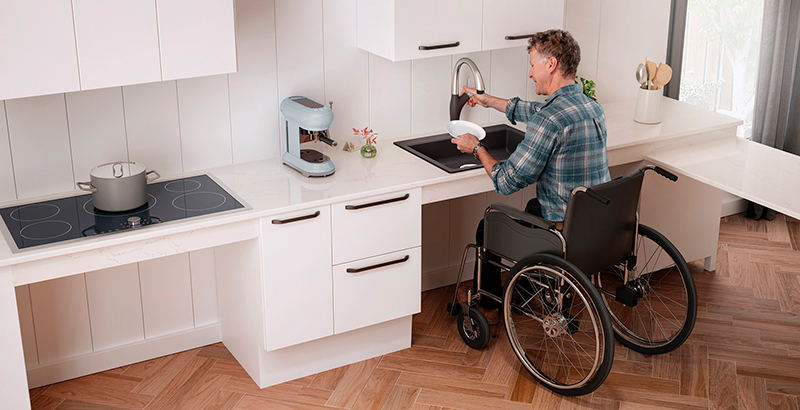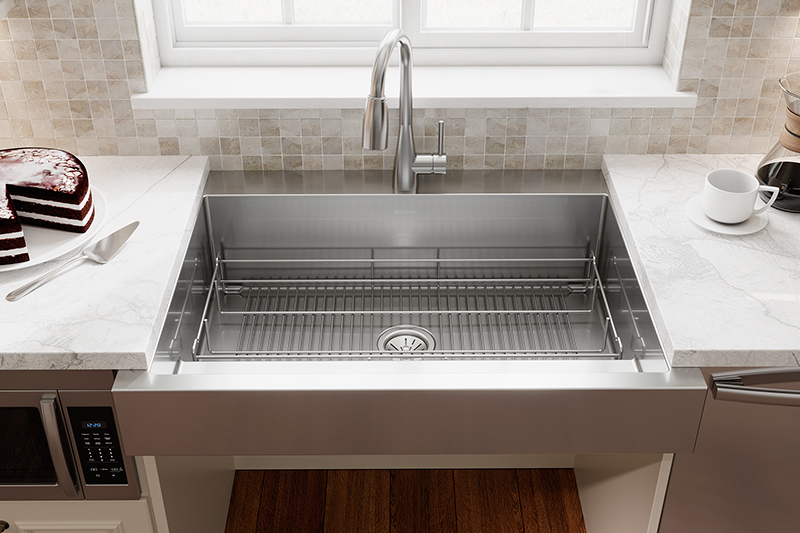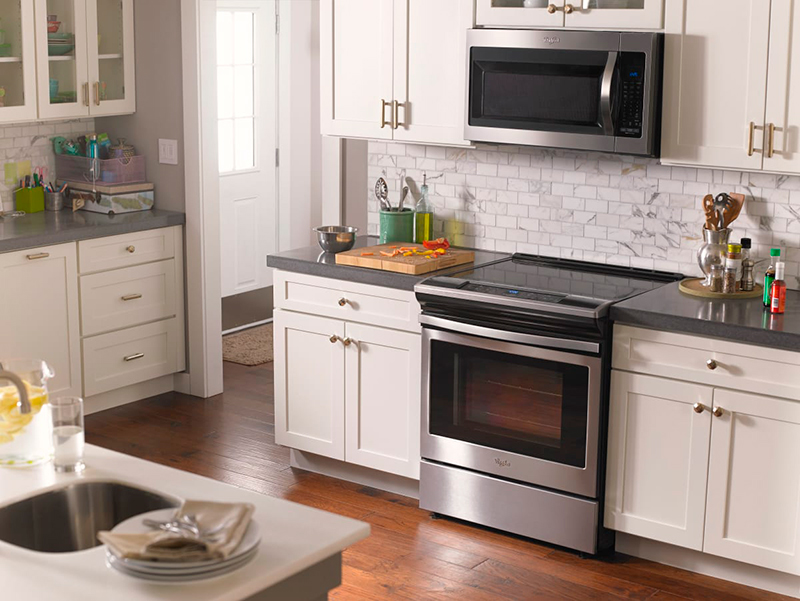
There are more than 30 million Americans that use wheelchairs and millions more that have other mobility issues. And those numbers are only going to increase as the population ages.
Even for homeowners not facing that challenge today, it makes sense to prepare your house for older visitors or your own future needs. An accessible home will allow you to live in it longer by increasing safety and independence. As Certified Aging in Place Specialists, the T.W. Ellis team has been trained in the unique requirements of preparing a home for an aging population.
There are several improvements a homeowner can make to a kitchen to improve accessibility.
Doors and Entry
A 36-inch wide entry to the kitchen will provide enough clearance for a wheelchair or walker, but a 42-inch opening will provide more comfortable passage. An open passageway is the easiest way to make entry into the kitchen. However, if there are doors separating the space, swing-clear hinges will make traveling through the doorway easier. (Swing-clear hinges are hinges that swing the door completely clear of the opening.) Doors should be fitted with lever-style handles versus doorknobs for ease of gripping and opening.
Layout and Flooring
The overall layout of the kitchen also needs to keep these dimensions in mind. There must be ample clearance around islands, countertops and appliances. To provide enough space for a wheelchair, a pass-through kitchen should have 40-inch clearance, while a U-shaped kitchen should have 60 inches.
Flooring should also be chosen to be low maintenance, easy to clean and slip-resistant.
Countertops
Generally speaking, accessible kitchen countertops should be installed at a 34-inch height. However, it is best to customize that for your own personal needs as heights vary. For your family, countertops of varying heights may be appropriate.
The accessible countertop should have at least 30 inches of workspace. Avoid putting cabinets under the accessible surfaces in order to allow clearance for wheelchairs.

Sinks
Like countertops, accessible kitchen sinks need to have an open space beneath them. Clearance should be at least 27 inches high and 8 inches deep. To help with that depth clearance, position drains at the rear of the sink, keeping pipes from blocking wheelchair access.
Touch-control and voice-activated faucets continue to come down in price and will make the sink easier to operate than having to grip a handle.
Storage
If they’re in the budget, electric adjustable cabinets will make the storage accessible to all residents and guests at varying heights. Otherwise, cabinets should be placed at the appropriate heights to be reachable for your needs. Commonly used items should be placed where they are easily reachable. Roll-out shelves also make it easier to access pots, pans and other items.
Thing about hardware choices as well. Loops or long handles on cabinets and drawers are easier to grip than traditional knobs, allowing easier access.

Appliances
Appliances also need to be placed to allow for accessibility. If possible, install a separate oven and cooktop in order to allow space under the range. Wall ovens can be placed at varying heights for maximum use. Avoid over-range microwaves in favor of counter height ones or lower wall-mounted options.
Refrigerators and dishwashers should also be chosen that have easily reachable controls. Dishwasher drawers or undercounter refrigerators are also available options. It’s best to try out various appliances to see what works best for your family. Time to work on upgrading your kitchen? T.W. Ellis, a Certified Aging in Place Specialist, is ready to help you prepare your home for the future. Contact us today to discuss your remodeling needs!
